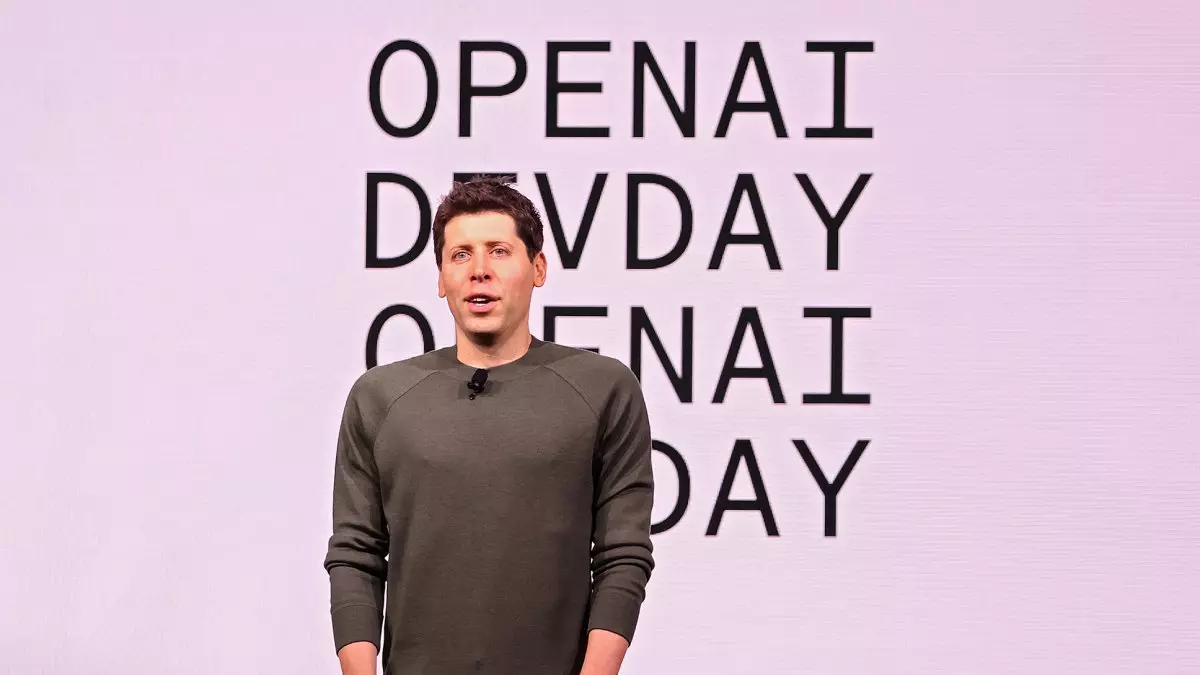The world of artificial intelligence is rapidly evolving, with companies like OpenAI at the forefront of this innovation cycle. However, as the organization’s CEO Sam Altman revealed during a recent Reddit AMA, the path to progress is littered with obstacles. Specifically, the most pressing issue shared by Altman was the inadequacy of computational resources, a problem that is hampering the frequency with which OpenAI can release new products.
One of the primary reasons behind OpenAI’s slower rollout of new products relates to the increasing complexity of their AI models. According to Altman, the intricacies involved in developing these advanced systems have made it challenging to allocate compute resources effectively. This complexity often translates into the need for more robust infrastructure, raising the stakes for the company. The growing demand for faster and more powerful computational capabilities serves as a bottleneck, inhibiting not just development but also the potential competitiveness of OpenAI in the bustling AI landscape.
Public reports indicate that OpenAI’s ability to secure adequate compute resources has been limited, leading to a reliance on partnerships—such as their collaboration with Broadcom to develop new AI chips. These chips are projected to play a crucial role in accelerating AI development, but their arrival isn’t expected until 2026. This highlights a critical timeline concern for OpenAI, positioning the company in a race against time and competitors who may already be advancing on their own technological fronts.
The implications of these compute limitations have ripple effects on OpenAI’s product offerings. Notably, the advanced voice capabilities for ChatGPT that were initially exhibited are experiencing delays due to the operational constraints imposed by the company’s current infrastructure. This was particularly evident during an earlier demonstration in April, where the voice feature was showcased responding to real-time visual data. The executive team’s rush to reveal this feature appeared to be a strategic move to divert attention from Google’s own conference rather than a genuinely prepared unveiling.
In a candid admission, Altman mentioned that the surrounding noise and urgency of product demonstrations did not align with the capabilities of the technology, partially revealing cracks in OpenAI’s development strategy. As the expectations for innovative products rise, the inability to roll out promised features can lead to consumer disappointment and eroded trust in the brand.
Among the future prospects for OpenAI’s offerings, DALL-E and Sora are notable mentions. Altman explicitly stated that there is currently no defined timeline for releasing the new version of DALL-E, signaling a significant delay in one of their flagship products. Meanwhile, Sora, designed for video generation, has faced its share of challenges, including technical hurdles that have hindered performance in comparison to rivals like Luma and Runway. Such setbacks not only point to concerns about the readiness of these advanced tools but also highlight broader questions regarding OpenAI’s strategic approach to product development.
One particular challenge with Sora was its processing time, illustrated by the fact that a mere one-minute video clip required over ten minutes of processing. This inefficiency can severely impact user experience and adoption rates, emphasizing how critical efficient compute resources are in the race to innovate.
Altman’s responses in the AMA also touched on potential future policies, such as the consideration of allowing “NSFW” content in ChatGPT. This indicates a willingness to adapt to user needs and acknowledges the preference for treating adult users responsibly. Furthermore, he mentioned that the chief priority remains to enhance their reasoning models and introduce new features, including advancements in image understanding.
Ultimately, Altman’s insights shed light on a pivotal juncture for OpenAI. As they grapple with operational limitations, the organization must navigate a landscape of increasing consumer expectations while carefully planning for future innovations. The success of this navigation will largely depend on overcoming their computational limitations and refining their product release strategies. As the stakes grow ever higher in the AI arena, OpenAI’s ability to innovate and deliver will be crucial in ensuring its continued relevance and leadership in the field.


Leave a Reply